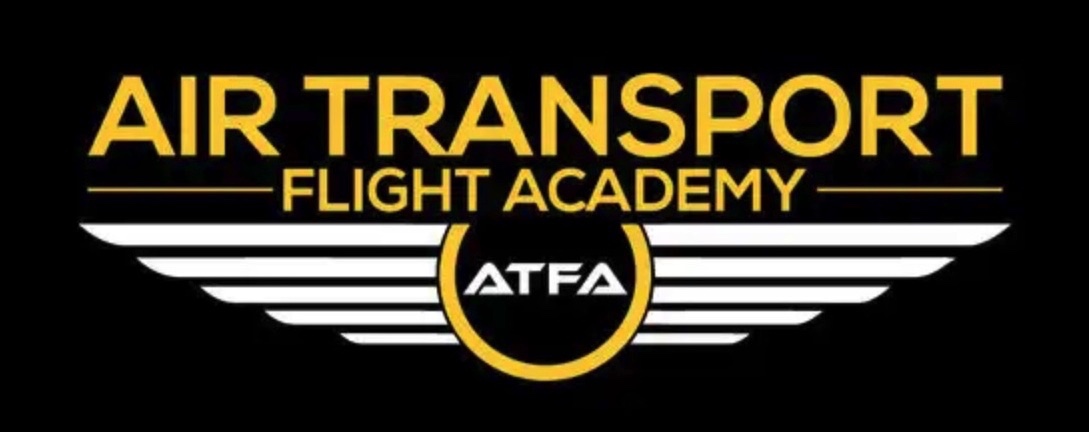Commercial Pilot Rating
Overview
The Commercial Pilot Curriculum at Air Transport Flight Academy (ATFA) is designed to equip aspiring pilots with the skills, knowledge, and experience needed to operate aircraft commercially. This program builds on the foundation established in private pilot training and emphasizes advanced flight maneuvers, decision-making, and professionalism required in the aviation industry.
Program Duration
The Commercial Pilot Curriculum is structured to be completed in approximately 6 to 12 months, depending on the student’s pace, availability, and weather conditions.
Curriculum Components
-
Ground School
The Ground School component provides the theoretical knowledge required for commercial flight operations, covering essential topics that encompass regulations, flight principles, navigation, and safety.
Course Topics:
– Introduction to Commercial Aviation
– Overview of commercial aviation and its operations
– Understanding the roles and responsibilities of a commercial pilot
– Federal Aviation Regulations (FARs) for Commercial Pilots
– In-depth study of relevant regulations (FAR Part 61 and Part 91)
– Commercial pilot licensing requirements
– Advanced Aerodynamics
– Principles of aerodynamics: lift, drag, weight, and thrust
– Understanding aircraft performance and limitations
– Navigation and Flight Planning
– Advanced use of aeronautical charts (sectional charts, enroute charts)
– Application of flight planning software and tools
– Calculating weight and balance, fuel requirements, and alternate planning
– Meteorology for Flight Operations
– Understanding weather patterns, systems, and forecasts
– Interpreting METARs, TAFs, and PIREPs for flight planning
– Crew Resource Management (CRM)
– Concepts of teamwork, communication, and decision-making in aviation
– Strategies for risk management and situational awareness
– Flight Operations
– In-depth examination of flight maneuvers specific to commercial operations
– Assembling and understanding the commercial flight operations manual
-
Flight Training
Flight Training consists of practical instruction under the guidance of certified flight instructors (CFIs). This component focuses on developing advanced flying skills and preparing for real-world commercial flying scenarios.
Flight Training Components:
– Pre-Flight Planning and Briefings
– Conducting thorough pre-flight briefings to discuss flight routes, weather conditions, and emergency procedures
– Advanced Maneuvers Training
– Practice of complex flight maneuvers, including steep turns, slow flight, and stalls
– Acquisition of skills for cross-country flying and navigation
– Commercial Flight Maneuvers
– Performing maneuvers required for commercial certification, including:
– Reciprocating engine systems operation
– Precision approaches using instruments
– Short and soft field takeoffs and landings
– Emergency descent and recovery techniques
– Night Flight Training
– Completing night flying requirements, focusing on navigation and flight safety
– Cross-Country Flight
– Completing a minimum of 10 hours of cross-country flight training as pilot-in-command (PIC)
– Conducting cross-country flights with various takeoff and landing scenarios
– Complex Aircraft Operations
– Training in complex aircraft (e.g., retractable landing gear, constant-speed propeller)
– Practice of emergency procedures and systems management
-
Simulator Training
Simulator Training will enhance decision-making skills and provide opportunities to practice advanced flight scenarios in a controlled environment.
Simulation Modules:
– IFR and VFR Operations
– Practicing standard and non-standard flight operations under both instrument and visual flight rules
– Emergency Procedures
– Handling emergency scenarios such as engine failures, system malfunctions, and weather changes
– Multi-Pilot Operations
– Simulating crew coordination and communication in a multi-pilot flight environment
-
Completion Standards
To be eligible for the FAA Commercial Pilot Certificate, students must fulfill the following requirements:
– Ground School Completion: Passing the final exam demonstrating knowledge in all required ground school topics.
– Flight Experience: Completion of required flight hours, which typically include:
– A minimum of 250 total flight hours, including:
– At least 100 hours of pilot-in-command (PIC) time
– 50 hours of cross-country flight time as PIC
– 20 hours of flight training from an authorized instructor
– 10 hours of instrument training
– Practical Test: Successfully passing the FAA oral and practical tests for the commercial pilot certificate, demonstrating proficiency in all required aircraft operations and maneuvers.
-
Additional Resources and Support
– Mentorship Program: Connecting students with experienced commercial pilots for guidance and insights into the industry.
– Career Counseling: Offering assistance in job placement, networking, and building a professional portfolio.
– Networking Opportunities: Organizing events for students to meet aviation professionals and industry leaders.
-
Assessment and Feedback
